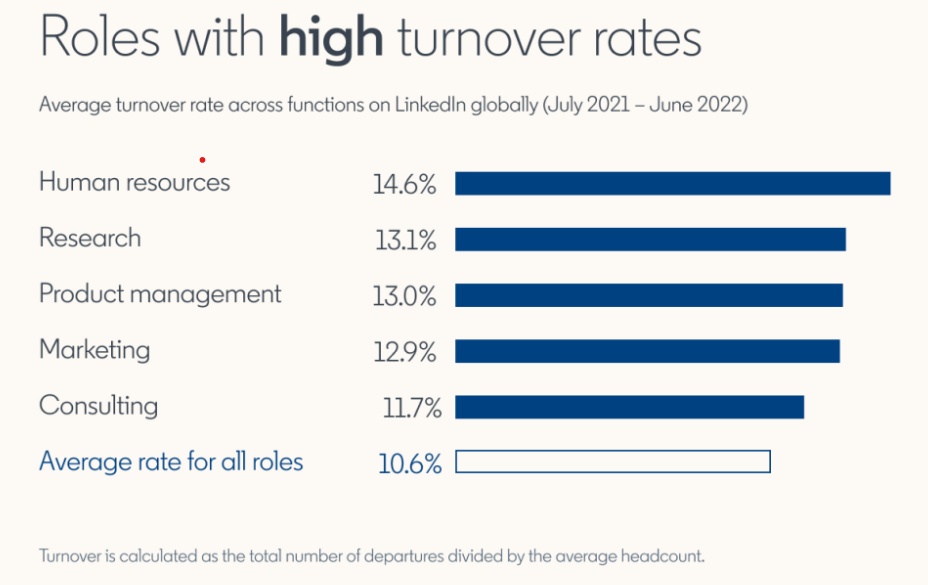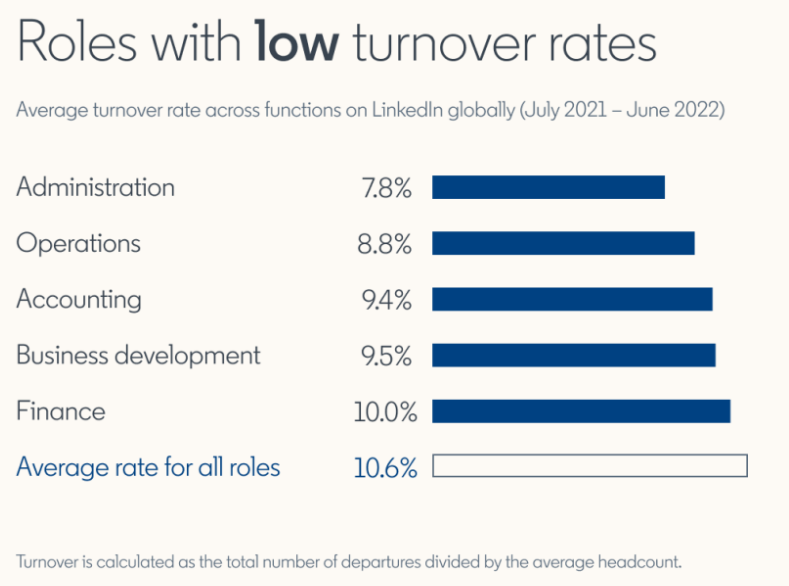 The irony is that HR professionals, who are most concerned with hiring and retention, are also the people changing jobs quicker than any other.
The irony is that HR professionals, who are most concerned with hiring and retention, are also the people changing jobs quicker than any other.
LinkedIn Talent Blog reported earlier this year that across all functions, HR has consistently had some of the highest turnover, ranking among the top three functions over the past three years.
The data for the study was drawn from hundreds of millions of members around the world and reveals some interesting patterns.
.
.
Is demand outstripping supply?
At the time of writing this article, I see 1,331 LinkedIn posts for HR-related jobs in Thailand. Last week, 1,436 vacant HR jobs.
Is this why you see many HR profiles on LinkedIn with employment periods between 6 months to 18 months? Not once but again and again and again over the last 5-8 years.
You can hardly blame the candidates who are using the limited supply of HR professionals to earn 20% more salary at every move.
Laughing all the way to the bank.
Turnover and Attrition is not the same
 The terms “Turnover” and “Attrition” are by most people, and even HR folks, used interchangeably as in meaning the same.
The terms “Turnover” and “Attrition” are by most people, and even HR folks, used interchangeably as in meaning the same.
But wrong, Turnover and Attrition are two different concepts.
The question you must ask to determine if it’s Turnover or if it’s Attrition: Will the company fill the position again with a replacement? Or not?
- The big difference between the two is that when turnover happens, the company will replace the employee who is leaving.
- In the case of attrition, the company will not fill the position again but instead leave it unfilled or even eliminating the position.
Turnover and Attrition numbers are both important to measure. Still, if your HR team only had time to track one, experts agreed that Turnover is the most important to follow.
Job boards aggregate jobs from other websites
LinkedIn and Indeed are two of the largest job sites in the world.
Like so many other job board websites, Indeed and LinkedIn scrape job postings from other websites, then “copy” and “paste” them into their own sites.
We call it aggregating job postings from other sites.
They say the reason is to create an easy job-seeking experience. There is a but.
Be aware that a job posted by an employer on three different job boards may show three times on the aggregator’s website.
It could be a job posted on the company’s career page, on a job board, and on the third-party recruiter’s web page. Three postings for the same job will show.

